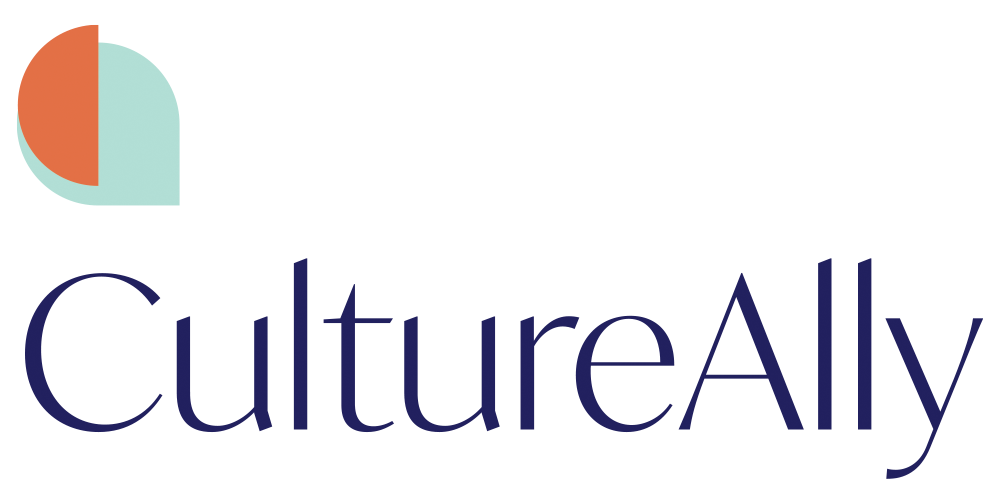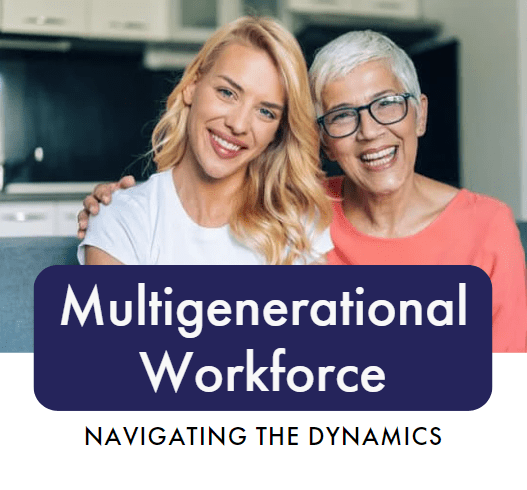Navigating the Dynamics of a Multigenerational Workforce
What is a Multigenerational Workforce?
A multigenerational workforce is a cohort of employees that spans various age groups, from young to old. The term can be used in the context of countries, industries or households.
In the modern workplace, diversity takes on a new dimension as four main age groups coexist. Diversity in age and experience can lead to notable differences among coworkers, stemming from their distinct life backgrounds.
While there are substantial advantages that businesses can gain from this diversity, it is imperative to implement an effective strategy for managing a cross-generational workforce to prevent potential issues from arising.
The 4 Age Groups in Today’s Workplace
While it's important to acknowledge that making generalizations about entire generations can be oversimplified and potentially misleading, it is valuable to recognize the unique circumstances that each cohort faced as they entered the workforce.
Common characteristics, values, and beliefs emerge as cohorts experience societal trends during specific life stages such as parenting styles, technological advancements, and economic conditions.
Baby Boomers: Born 1946 - 1964
Baby Boomers are well-established in their careers and hold positions of authority. In a survey of more than 1300 global executives, 54% indicated that the best way to retain Baby Boomer talent is by providing them with an opportunity to make an impact.
Thus, duty and high levels of responsibility can be great motivators for this generation. For employers, this can involve putting this group in mentor roles to help manage young talent.
Generation X: Born 1965 -1976
By 2028 Gen Xers are expected to outnumber Baby Boomers and are starting to replace them in managerial positions. Known for their entrepreneurial and self-reliant nature, they make up the highest percentage of startup founders at 55%.
Gen Xers, who grew up during the dot-com boom, tend to embrace technology to increase productivity and communication. To motivate Gen X employees, employers should provide autonomy and technology support to allow them to perform their jobs effectively.
Millennials (Generation Y): Born 1977 - 1995
Millennials are the fastest-growing segment of the workforce, on track to make up 75% of the global employment population by 2025. Many Millennials started their careers at the height of the Great Recession and as such, may value job security and routine.
According to a study conducted by Deloitte, Millennials dislike ambiguity more so than Gen X and Baby Boomers. Thus, providing immediate and transparent feedback, along with continual learning and growth opportunities, is essential for managing this cohort effectively.
Generation Z: Born 1996 - 2015
Gen Z is set to be the most diverse generation yet, with a survey showing that 47% of Gen Z employees identify as BIPOC compared to 39% of Millennials, 34% of Gen X and 25% of Boomers. Gen Z are more aware of social issues which highlights the importance for employers to have strong DEI efforts to attract and retain Gen Z talent.
This group is the first to grow up in a world where technology is always at their fingertips. With the dominance of social media, Gen Z is widely recognized for their creativity and individuality. Consequently, employers should think about offering Gen Z a variety of projects that allow them to take charge and work independently.
A national study focusing on Gen Z found that 60% of their demographic prefer multiple check-ins with their managers each week, emphasizing the importance of regular feedback and recognition—similar to what Millennials value.
In the same study, when asked about their top job priorities, 47% of Gen Z respondents mentioned they desire a fun work environment, while 44% expressed a preference for a flexible work schedule. Employers are struggling to adapt to these priorities as according to the Harvard Business Review, 54% of Gen Z employees are not engaged at work.
5 Benefits of Multigenerational Teams
There are a number of advantages in having a diverse generational mix in the workplace, including:
Enhanced creativity and innovation
An age-diverse team results in the ability to create more innovative ideas and solutions. Each generation brings its unique perspectives, experiences, and ideas to the table.
Less experienced employees may have exciting ideas that embrace new trends, while experienced employees have a greater understanding of the business landscape and past strategies.
2. Knowledge sharing and transfer
Experienced professionals can propel the career development of younger employees by sharing their industry knowledge.
On the other hand, younger talent has had greater exposure to digitalization and can be more comfortable with embracing new technology.
The transfer of skills and expertise results in a well-rounded workforce.
3. Broader customer reach and market insight
Different age groups have distinct consumer preferences. Having employees who represent different peer groups can be advantageous in understanding and catering to a diverse customer base.
4. Stronger talent pipeline
A multigenerational workforce can contribute to organizational longevity. When employees are promoted within, this ensures that knowledge and skills are passed down which allows companies to maintain stability and reduce costly turnover.
A creative method to retain top talent is to offer retiring employees an opportunity to transition to part-time work. This will ensure that institutional knowledge is retained and fostered within the organization.
5. Engaging culture
Having employees with diverse backgrounds energizes the culture as they get to meet others who are unlike them.
In a survey of over 1000 employees, 89% of respondents considered generation diversity in the workplace as favorable and 87% saw it as an opportunity to learn from each other.
Challenges of Age Diversity
Many companies are not leveraging the full advantages of a cross-generational workplace due to the challenges that come with it.
Here, we explore the potential conflicts and challenges that may arise:
Ageism and stereotypes
According to the Society for Human Resource Management (SHRM), charges of age discrimination against older workers have risen 47% since 1999.
Ageism can be exhibited through human biases in the hiring process, such as job descriptions using coded language like “fitting in with a young team” to deter older applicants.
Stereotypes, such as how older workers are resistant to change or unskilled with technology, can take an emotional toll and result in not only a loss of work quality but also poor mental health.
Differences in communication styles
In today's digital age, where written communication often takes precedence over verbal exchanges, variations in style and tone between age groups can frequently result in misinterpretations.
Younger generations tend to use acronyms and emojis to express emotions or reference social media trends. However, this can make it challenging for the older employees to gauge the intended tone accurately.
Varied work expectations and preferences
As employees progress through various life stages, their priorities in their professional careers naturally evolve.
For instance, a senior employee nearing retirement may place a high value on stability and comprehensive benefits that can ensure their future success. In contrast, junior employees may prioritize challenges and be more inclined to take risks.
4 Strategies for Effective Management
By aligning employee values and motivations with the work environment, employers have the opportunity to significantly enhance job satisfaction, retention rates, and overall performance.
Here are four strategies to foster an inclusive workplace and fully leverage the diversity within your organization:
Mentorship and reverse mentorship programs
Mentorship leverages the wealth of experience accumulated by senior employees to offer guidance to their junior counterparts.
Conversely, reverse mentorship flips the script, empowering junior employees to mentor their senior colleagues in areas such as digital literacy and cultural relevance.
BNY Mellon's reverse mentorship program
In response to higher attrition rates among its millennial workforce compared to other employees, BNY Mellon initiated a reverse mentorship program. This program not only provided Millennials with the impact and recognition they sought in their roles but also yielded unsurprising success.
According to the Harvard Business Review, the program achieved an impressive retention rate of 96% for the first cohort of Millennial mentors.
Even BNY Mellon's CEO participated, using his mentor's expertise to improve his social media proficiency. His transformation from an infrequent user to one of the company's most engaged social media enthusiasts has resulted in active posts on LinkedIn and increased interaction with employees, fostering a level of engagement that was previously untapped.
2. Flexible benefits package
Developing flexible benefit packages that cater to the specific needs of each generation is an effective solution to address diverse values and life stages.
An example of this approach can be seen in the experience of ARUP, a global engineering firm based in the UK. Recognizing that their existing benefits package primarily favored senior employees and saw limited engagement from the numerous graduates they onboarded annually, ARUP revamped their offerings.
ARUP's revised benefits package
The updated benefits package includes features such as flexible working arrangements, opportunities for career breaks and sabbaticals, customizable benefits, and risk protection options.
These changes resulted in great success, with employee satisfaction regarding the benefits package reaching an all-time high. Impressively, 80% of employees believe that the new benefits package meets their individual needs.
3. Training and development programs
Organizational culture plays a key role in embracing generational diversity. Conducting diversity training can address bias and stereotypes such as ageism and promote inclusive leadership throughout the organization.
Programs like alumni associations offer numerous advantages for employers managing a multigenerational workforce. With an average of 10,000 Baby Boomers retiring daily and Millennials changing jobs approximately every 2.8 years, the workforce is experiencing significant disruption and potential knowledge gaps as senior employees depart.
Alumni programs bridge these gaps by facilitating the transfer of knowledge from former employees to younger colleagues and creating coaching opportunities.
Boston Consulting Group's alumni program
BCG’s program boasts an impressive network of over 20,000 alumni, engaging its members through newsletters, social media networks, and the organization of special events. It emphasizes the value of alumni networks in maintaining connections and preserving institutional knowledge.
4. Feedback and recognition
As in any situation, it's vital to maintain regular check-ins with your employees to gain valuable insights into their needs and concerns, particularly as you implement the strategies mentioned above.
This feedback serves as a valuable resource for evaluating the effectiveness of your initiatives and tailoring them to better align with your organization's evolving needs.
In addition to collecting feedback, recognizing and acknowledging deserving employees is equally important for boosting motivation. Employee recognition and rewards play a pivotal role in appreciating and celebrating the achievements of employees, regardless of their age groups.
Marriott’s employee rewards program
Marriott, one of the world’s top multinational workplaces has a S.P.I.R.I.T. (Special recognition, Participation in the community, Introducing new business, Recruitment, Innovation and Team Recognition) rewards program.
Employees who exhibit the S.P.I.R.I.T. values earn points that can redeemed for prizes from a catalogue. The implementation of this program resulted in a 16% increase in its overall engagement score, as measured through their annual engagement survey.
Embracing Generational Diversity
In today's ever-evolving workforce, organizations must proactively adopt strategies that accommodate the unique dynamics of a multigenerational workforce.
Embracing and harnessing the collective strengths and perspectives of each group is the key to thriving in this diverse environment.
A cohesive age-diverse workplace offers many benefits, including increased innovation, knowledge transfer, better customer relations, a robust talent pipeline, and a dynamic and inspiring culture.
By championing this approach, your organization not only secures its relevance but also positions itself for sustained growth, innovation, and enduring success in the years to come.




